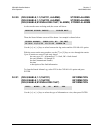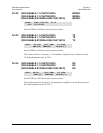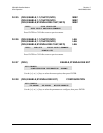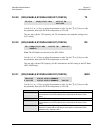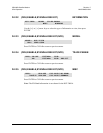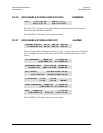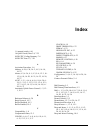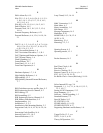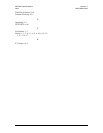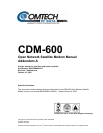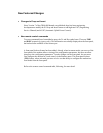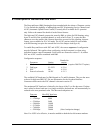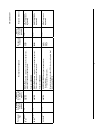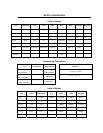
1
6.1 Description of D&I with ESC and AUPC
The Drop and Insert (D&I) framing has been extended with the release of firmware version
2.1.0 to include the capability of adding high-rate ESC (Engineering Service Channel) and
AUPC (Automatic Uplink Power Control). Currently this is available for E1 operation
only. Refer to the manual for details of each of these features
The high-rate ESC channel operates the same for D&I as it does for IBS framing, using
bytes 16 and 48 of the overhead channel, as well as half of byte 32, to pass the data
characters over the satellite link. Because these bits are reserved for signaling, this new
feature is not available for E1-CAS mode. The AUPC portion (which is not available
with IBS framing) occupies the unused first bit of the unique word (byte 0).
To enable Drop and Insert with ESC and AUPC, the correct sequence of configuration
must be followed. This applies when configuring via the front panel, or when using
individual remote control commands. Prior to this new firmware version 2.1.0, neither
ESC nor AUPC could be combined with D&I.
Configuration sequence:
Detailed in
Parameter Setting section
1 Mode: D&I 6.3.1.2 (requires D&I FAST option)
2 D&I type: E1-CCS 6.3.1.6
3 ESC On 6.3.1.8
4 Power level mode: AUPC 6.3.1.3
The available ESC baud rates for D&I depend on Tx and Rx datarate. They are the same
as those for high-rate IBS ESC. Pin-out information for the Overhead Interface
Connector which carries the ESC channel is shown in section 5.3.
The maximum ESC baud rate is limited by the lower of the Tx or Rx data rates. If a data
rate is edited so that a baud rate is no longer available, the baud rate will automatically be
reduced to the next permitted value. The data-rate breakpoints are:
Data rate
Max ESC baud rate
64 kbps 2400
> = 128 kbps 4800
> = 256 kbps 9600
> = 384 kbps 14400
> = 512 kbps 19200
> = 768 kbps 28800
> =1280 kbps 38400 (Note: breakpoint change)
Note: For AUPC to be effective, it must be enabled on both the local & remote modems.



